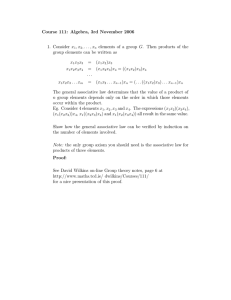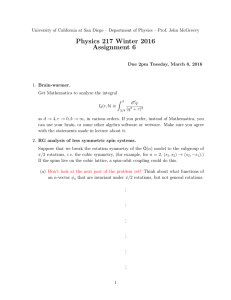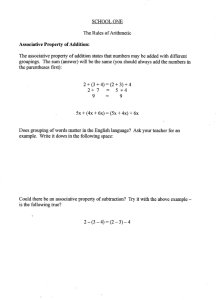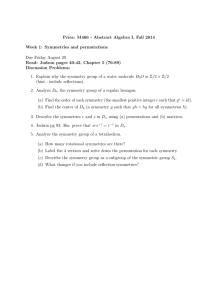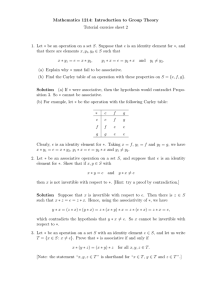Course 111: Algebra, 3rd November 2006 1. Consider x , x
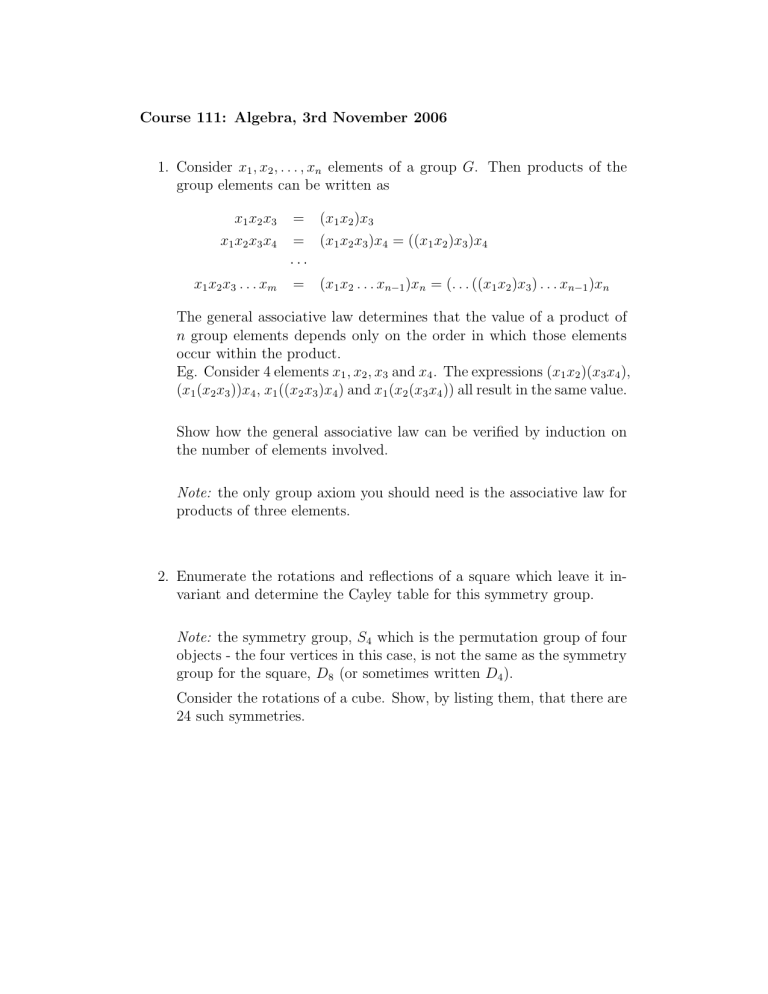
Course 111: Algebra, 3rd November 2006
1. Consider x
1
, x
2
, . . . , x n elements of a group G . Then products of the group elements can be written as x
1 x
2 x
3
= ( x
1 x
2
) x
3 x
1 x
2 x
3 x
4
= ( x
1 x
2 x
3
) x
4
= (( x
1 x
2
) x
3
) x
4 x
1 x
2 x
3
. . . x m
· · ·
= ( x
1 x
2
. . . x n
−
1
) x n
= ( . . .
(( x
1 x
2
) x
3
) . . . x n
−
1
) x n
The general associative law determines that the value of a product of n group elements depends only on the order in which those elements occur within the product.
Eg. Consider 4 elements x
1
, x
2
, x
3 and x
4
. The expressions ( x
1 x
2
)( x
3 x
4
),
( x
1
( x
2 x
3
)) x
4
, x
1
(( x
2 x
3
) x
4
) and x
1
( x
2
( x
3 x
4
)) all result in the same value.
Show how the general associative law can be verified by induction on the number of elements involved.
Note: the only group axiom you should need is the associative law for products of three elements.
2. Enumerate the rotations and reflections of a square which leave it invariant and determine the Cayley table for this symmetry group.
Note: the symmetry group, S
4 which is the permutation group of four objects - the four vertices in this case, is not the same as the symmetry group for the square, D
8
(or sometimes written D
4
).
Consider the rotations of a cube. Show, by listing them, that there are
24 such symmetries.
